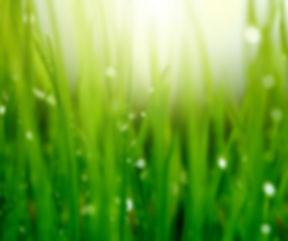
Springtime



If winter is the most difficult time of year for a cattle farm, springtime is both the easiest and the most critical. Most species of grass in North America are cool-season grasses. These grasses prefer the mild days and cool nights of Spring, and with adequate rain they will thrive. They grow so fast this time-of-year that the cattle can't even keep up! If grass is not either grazed or mowed for extended periods of time the grass will become old and fiberous, which is not what the cattle like. It would also stop growing, so paddocks of grass that the cattle don't need right away are mowed down, allowed to dry, and then baled as hay for use either during the winter or a droughty summer when crops cannot grow.
Some bales are baled dry and others are baled wet and sealed and allowed to ferment, much like beer or pickles. Baling wet (silage) hay allows us to utilize crops that would not dry down enough to make good dry hay, such as clovers, alfalfa, cereal rye and ryegrass. Alfalfa and clover are examples of legume species. Legumes are high in protein, and they also a wonderful type of crop because they make their own fertilizer! They do this through a symbiotic relationship with bacteria in the soil. The legumes secrete sugars from their roots that attract the bacteria. The bacteria then form colonies on the roots of the plants and "fix" nitrogen from the air into a form that the plants can use.
By planting pastures with a mix of grass and legumes farmers can not only supply their cattle with a high-protein foodsource, but also reduce how much nitrogen they need to apply to the land as fertilizer. I have also found that cattle grazed on clover and alfalfa produce a wonderful, rich-tasting beef. Unfortunately legumes are so rich that we rarely can graze them exclusively without at least 50% of the stand being composed of grass, so pastures still require some fertilizer, but not so large an amount that it will run off and foul our water ways.
Calves continue to grow during the spring, and the momma cows are quite busy grazing to produce enough milk for their youngsters. This is also the time of year for our herd bull to start doing his job of breeding the cows once they have had a few months to recover from labor. A good cow should produce a calf every 12 months, and a good bull should have all they cows pregnant by their second estrous cycle. Our herd bull was selected both for his docile nature and for producing small calves at birth. Small calves are born easier. Belted Galloways are noted for their ease-of-calving, but they are also small cattle so they should never be bred to a bull from a much larger breed such as a holstein.



